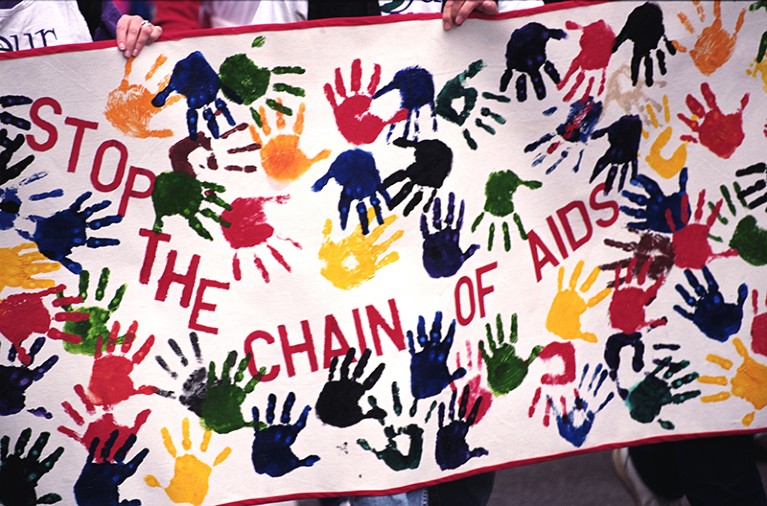
Credit: PhotoDisc/ Getty Images
The first documented AIDS cases occurred in men who have sex with men and intravenous drug users who lived in US metropolitan areas. Other affected groups, including people who had received blood products and Haitians, were identified soon after. During 1983 to 1986, it became apparent that AIDS was not a localized epidemic, either in the populations or regions that it affected, but instead was a pandemic that spread around the globe and throughout different groups of society.
A series of papers, starting with a report by Clumeck et al. in 1983 that described acquired immunodeficiency in five African men who had emigrated to Belgium, began to point toward the prevalence of HIV-1 infection in Africa. The same authors followed up with a more detailed report of 23 previously healthy African AIDS patients hospitalized in Belgium, nine of whom were women. Importantly, none of these patients had any of the previously identified risk factors and the study therefore indicated heterosexual transmission.
Further reports reinforced the widespread occurrence of AIDS in Africa. In 1984, a key study by Piot et al. described a cohort of 38 patients in Zaire with a roughly even distribution of cases between men and women. This led the authors to proclaim heterosexual transmission as a “new epidemiological setting for this worldwide disease.” In 1985, Serwadda et al. reported the identification of 71 AIDS patients in Uganda, although the authors called the syndrome “slim disease,” as diarrhea and weight loss were the clinically dominant features. Similarly to the above study, almost half of the patients were women and, overall, most cases occurred in a rural, heterosexual population. Notably, the authors were able to detect antibodies to HIV-1 (or HTLV-III, as it was called at the time) in almost 90% of the patients. In 1986, Kreiss et al. reported that the AIDS epidemic had spread extensively among urban prostitutes in Nairobi, Kenya. HIV-1 and AIDS in Africa were definitively on the map.
Besides sexual transmission and transmission through blood, the occurrence of immunodeficiency in children indicated that HIV-1 can also be transmitted from mother to child. In 1983, Rubinstein et al. and Oleske et al. described acquired immunodeficiency in seven and eight children, respectively, who were born to mothers with symptoms of immunodeficiency themselves and/or risk factors such as intravenous drug use. As the children did not have direct sexual or blood exposure themselves, mother-to-child transmission of the disease was assumed. This is in contrast to AIDS in children with hemophilia, who were infected through contaminated blood products.
Later findings pointed toward the modes of mother-to-child transmission, occurring via blood during birth and possibly via breast-feeding. In 1985, Ziegler et al. reported a case in which a mother received a transfusion to treat blood loss after birth. The blood donor was diagnosed with AIDS 13 months later. Both the mother and baby were then shown to have antibodies against HTLV-III and, as there was no other exposure, the authors speculated that the baby was infected through breast milk.
Together, these early epidemiological studies were crucial in establishing the true extent of the HIV-1/AIDS pandemic and the routes of transmission. The studies in African cohorts also foreshadowed the devastating effects HIV infection would have on entire countries and societies on the continent. Finally, recognizing the risk and modes of mother-to-child transmission set the stage for some of the most successful interventions to limit the further spread of HIV infection (MILESTONE 20).

 Nature Milestones in HIV research
Nature Milestones in HIV research